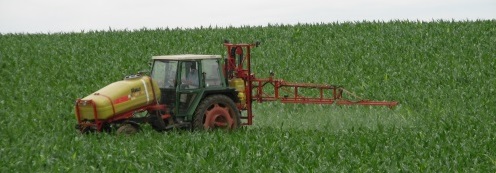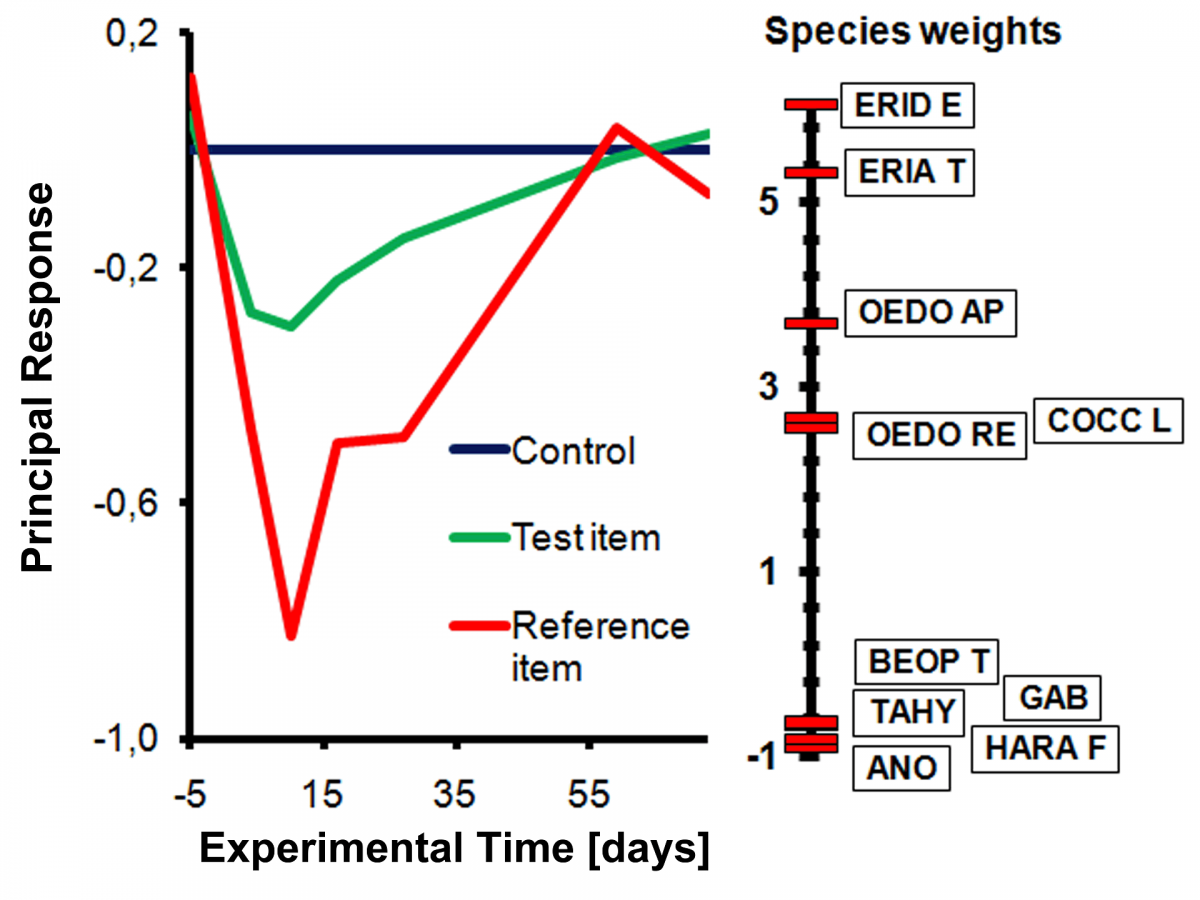- Your Product Type
- Your Study Type
- Aquatic Ecotoxicology
- Aquatic Invertebrates
- OECD 202: Daphnia sp., Acute Immobilisation Test
- OECD 211: Daphnia magna Reproduction Test
- OECD 235: Chironomus sp., Acute Immobilisation Test
- OECD 218/219: Sediment-Water Chironomid Toxicity Test Using Spiked Sediment/Spiked Water
- OECD 233: Sediment-Water Chironomid Life-Cycle Toxicity Test Using Spiked Water or Spiked Sediment
- OECD 225: Sediment-water Lumbriculus Toxicity Test Using Spiked Sediment
- OECD 242: Potamopyrgus antipodarum Reproduction Test
- OECD 243: Lymnaea stagnalis Reproduction Test
- Fish and other vertebrates
- OECD 203: Fish, Acute Toxicity Test
- OECD 215: Fish Juvenile Growth Study
- OECD 212: Fish, Short-term Toxicity Test on Embryo and Sac-fry Stages
- OECD 231: The Amphibian Metamorphosis Assay
- OECD 236: Fish Embryo Acute Toxicity Test
- OECD 210: Fish, Early-life Stage Toxicity Test
- OECD 229 Fish Short Term Reproduction Assay and OECD 230 21-day Fish Assay
- OECD 240 Medaka Extended One Generation Reproduction Test (MEOGRT)
- OECD 248: Xenopus Eleutheroembryonic Thyroid Assay
- OPPTS 850.1500: Fish Life Cycle Toxicity Test
- OÈCD 234 Fish sexual development test
- Aquatic plants
- Analytical Dose Verification
- Aquatic Invertebrates
- Chemistry
- Biodegradation Studies
- Analytical Chemistry Studies and Residues
- Physical-Chemical Properties Studies
- Storage Stability Studies
- OPPTS 830.6302, OPPTS 830.6303,and OPPTS 830.6304: Physical State, Colour and Odor at 20 °C and at 101.3 kPa
- EU A.1: Melting temperature/range
- EU A.2: Boiling temperature
- EU A.3: Relative density (liquids and solids)
- EU A.4: Vapour pressure
- EU A.5: Surface tension
- EU A.9: Flashpoint
- EU A.10: Flammability (solids)
- EU A.12: Flammability (contact with water)
- EU A.13: Pyrophoric properties of solids and liquids
- EU A.16: Relative self-ignition temperature for solids
- EU A.17: Oxidising properties
- OECD 114: Viscosity of Liquids
- Environmental Fate
- Transformation in Soil
- Transformation in Water
- Transformation in Manure
- Adsorption on Soil and Sewage Sludge
- Bioaccumulation and Bioconcentration
- Terrestrial Ecotoxicology
- Non-target Arthropods
- Non-target arthropod testing with the parasitic wasp (Aphidius rhopalosiphi)
- Non-target arthropod testing with the lacewing (Chrysoperla carnea)
- Non-target arthropod testing with the ladybird beetle (Coccinella septempunctata)
- Non-target arthropod testing with the predatory bug (Orius laevigatus)
- Non-target arthropod testing with the predatory mite (Typhlodromus pyri)
- Non-target arthropod testing with the rove beetle (Aleochara bilineata)
- Non-target arthropod testing with the carabid beetle (Poecilus cupreus)
- Non-target arthropod testing with the wolf spider (Pardosa spec.)
- Soil Organisms
- Honey Bees and other Pollinators
- OECD 213/214: Honey bees, Acute Oral and Acute Contact Toxicity Test
- OECD 245: Honey Bee (Apis Mellifera L.), Chronic Oral Toxicity Test (10-Day Feeding)
- OECD 237: Honey Bee Larval Toxicity Test, Single Exposure
- OECD 239: Honey Bee Larval Toxicity Test
- EPPO 170: Honey Bee Field Study – do plant protection products effect honey bee colonies?
- Oomen et al. 1992: Honey Bee Brood Feeding Study
- OECD 75: Honey Bee Brood Test under Semi-field Conditions in Tunnels
- OECD 246/247 Acute Oral and Contact Toxicity to the Bumblebee, Bombus terrestris L.
- Solitary Bee Acute Contact Toxicity Study in the Laboratory (Osmia sp.) Solitary Bee Acute Oral Toxicity Study in the Laboratory (Osmia sp.) (protocols for ringtests with solitary bees recommended by the non-Apis working group)
- SANTE/11956/2016 rev.9 Residue trials for MRL setting in honey
- Non-target plants
- OECD 208: Terrestrial Plant Test - Seedling Emergence and Seedling Growth Test
- OECD 227: Terrestrial Plant Test - Vegetative Vigour Test
- OCSPP 850.4100: Seedling Emergence and Seedling Growth
- OCSPP 850.4150: Vegetative Vigor
- EPPO PP 1/207(2): Efficacy evaluation of plant protection products, Effects on succeeding crops
- Field Studies
- Non-target Arthropods
- Ecological Modelling
- Quality Assurance
- Testing of Potential Endocrine Disruptors
- Aquatic Ecotoxicology
- News
- Company
- Career
- Contact
Full Fauna Field Studies
Applications of plant protection products should not unacceptably affect non-target arthropods communities. A field study on arthropod communities under real conditions of agricultural practice (in-crop) or alternatively in an off crop situation is indicated if laboratory studies as well higher tier studies cannot sufficiently prove harmlessness on non-target arthropods. Test item related effects are analysed both on single species level and on arthropods community level.

Study Design
Tailor-made study design
Depending on whether the full fauna study is conducted as an in crop or an off crop field study the study design is different:
| In crop | Off crop | |
|---|---|---|
| crop | arable crop, grape vine, orchards | grassland |
| field size | up to 1ha per plot | 0.06 ha per plot |
| treatment groups | maximum field rates, drift rates, control, toxic reference | dose response design: 5 test item dose rates, control, toxic reference |
| spray. equipment | field sprayer | movable plot sprayer |
| duration | up to 1 year | 2-3 months |
Data collection
This type of study requires an intensive sampling of the arthropd taxa using different sampling methods to collect the arthropods living in different strata of the habitat.
| Sampling methods | Target |
|---|---|
| pitfall traps | soil dwellers |
| Mac Fayden heat extraction of soil cores | litter and top soil |
| aspirator, ground photo-eclector, Berlese funnel | plant / litter |
Target taxa
Desired taxa and level of taxonomic precision depends on study design and sampling methods which will be adapted to the aim of the respective study. The choice of target taxa and level of taxonomic precision is in accordance with (de Jong et al. 2010).
Course of the test
1-5 days before the test item application date different sampling methods are used to sample soil living, plant dwelling and soil surface active arthropods from the naturally occurring populations of the test site. Subsequently, the application is carried out according to the Good Agricultural Practice. Afterwards the same sampling methods are used on ca. 3-6 sampling occassions in order to evaluate the effects of the test item on the arthropod populations and to determine NOEL on single taxa and community level.
Data evaluation
Evaluation of the treatment effect on single taxon level is done by using Abbott’s formula for all representative taxa at each sampling instance. Statistical analysis will be performed by using univariate techniques (e.g. Williams` test). Evaluation of the treatment effect on arthropod community level is done by performing a principal response curve (PRC) analysis.

Endpoints
The in crop full fauna study accepts initial test item effects and focuses on the timespan which is necessary to demonstrate recovery. Recovery is considered to have occurred when arthropod numbers are not significantly lower than the control on two consecutive sampling occasions. The off crop study is aimed at finding the NOEL (no observed effect level).
Guidelines and Literature
- De Jong F M W, Bakker F M, Brown K, Jilsen C J T J, Posthuma-Doodeman C J A M, Smit C E, Van Der Steen J J M, Van Eekelen G M A (2010): Guidance for summarising and evaluating field studies with non-target arthropods. A guidance document of the Dutch Platform for the assessment of higher tier studies. RIVM 2010.
- Alix A, Bakker F, Barrett K, Brühl C A, Coulson M, Hoy S, Jansen J P, Jepson P, Lewis G, Neumann P, Süßenbach D, van Vliet P (eds.): ESCORT 3: Linking Non-Target Arthropod Testing and Risk Assessment with Protection Goals. CRC SETAC Press.
